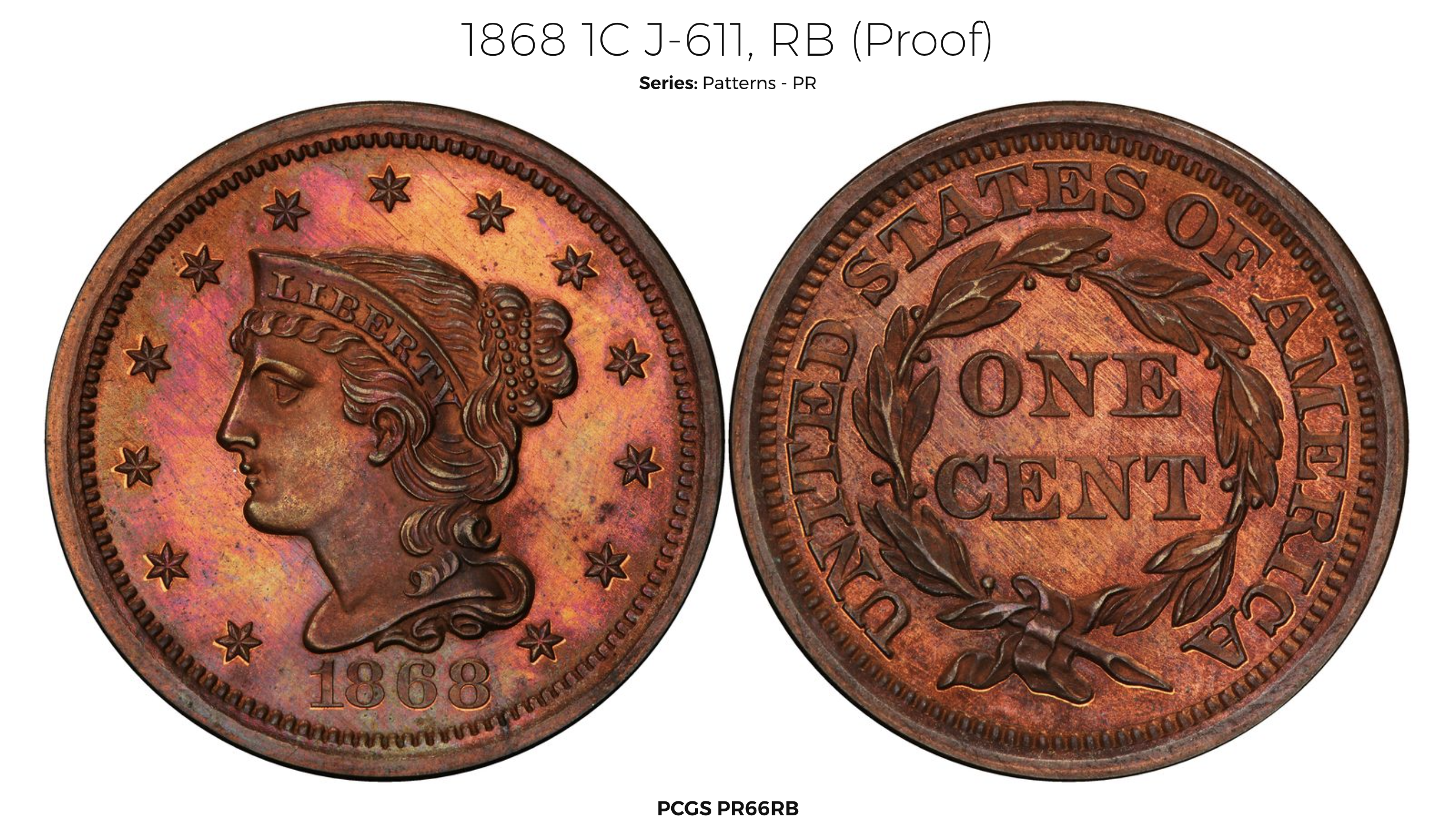Howdy, Stranger!
It looks like you're new here. If you want to get involved, click one of these buttons!
Quick Links
1868 Large Cent -- The Most Underpriced Rarity?
Yes, a genuine 1868 large cent with the adopted Braided Hair design and metal composition despite its official ending in 1857. Martin Paul told me that it was his favorite coin of all time.
I have heard that just five unique coins actually exist although the population reports are inflated with duplications. I have only owned one, which was rejected by CAC. In fact, just one of my patterns was ever approved. What does JA have against patterns? Are most of them ex-Farouck and thus subjected to his abrasive cleanings?

I have heard that just five unique coins actually exist although the population reports are inflated with duplications. I have only owned one, which was rejected by CAC. In fact, just one of my patterns was ever approved. What does JA have against patterns? Are most of them ex-Farouck and thus subjected to his abrasive cleanings?

Tagged:


Comments
As for JA and CAC, I have not noticed any bias against patterns. Not on my submissions, and not on what I see in the marketplace. Take a look at the Simpson patterns in the Heritage archives if you don't believe me.
JA may not have bias against patterns per se, but fewer than one percent of those certified by PCGS and NGC have CAC beans (see CAC's pop report). I suspect that the real culprit is the 19th Century collectors' habit of harshly cleaning their coins. And the abrasive treatment to hundreds of specimens perpetrated by King Farouk's "coin conserver".
As a result of my work, I see a lot of patterns and I don’t think CAC is tougher on them than on other types of coins.
Not germane but sort of germane, I saw the GC Toned Morgan auction results last night for 1884 O, 1885 0,1887 and 1888, and all CAC and all Ex Legend, so....sompin hoppen dere.
https://uspatterns.stores.yahoo.net/j611p676.html
My mistake. I just look at the circ strikes, not the proofs.
Maybe not enough appeal to the true copper enthusiast but I do enjoy owning this piece. Thanks to Bob Simpson and Heritage.
As a side note ... I appreciated Bowers narrative for a J-610 found on Page 64 of Bowers and Ruddy Aug 3, 1998 Rarity Sale catalog for Lot 2004
“ … Although the 1868 large cent seems to the writer to be a post-dated numismatic rarity, not a pattern in any way, shape, or form, for many years it has been primarily listed in pattern references only, with scarcely a mention in standard texts. Whether or not something should be collected, whether or not it should be included on a “want list,” has often been dictated as to whether a piece is listed in that arbiter of numismatic fashions, A Guide Book of United States Coins. For a number of years we have advanced the “cause” of the 1868 large cent in this regard, feeling that it is deserving of listing. Today[in 1998], it receives a note (page 92 of that reference), although it seems that a full listing is desired. We have known and admired Ken Bressett, editor of the Guide Book, for many years, and have often prodded him on the 1868 large cent listing, to the point at which it has become an object of humor between us. Recently, after writing a serious tribute to Ken and his wife Bert for inclusion in the July issue of The Numismatist, the writer inserted a humorous (?) advertisement as a tribute to Ken, but could not resist illustrating it with the object of interchange between us, an 1868 large cent!
We have always liked the 1868 large cent, believing that it has an interesting story and also numismatic significance. When¬ ever we have had a chance to buy an example on the market we have done so. Perhaps it is a good thing it is not listed along with the 1884 and 1885 trade dollar, 1913 Liberty Head nickel, and other after-the-regular-series-has-ended pieces, or we would not be able to afford an 1868 large cent….”
The ad that Bowers reference which was a bit before my time in having interest in patterns ... I think this was a funny:
It is a Pattern of nothing coming along in the future either.
IMO, these coins are either "moonlight" concoctions OR something issued OFFICIALLY to commemorate, celebrate, ? , or something in the past.
Anything happen in 1768, 1818, 0r 1868? Anything going on in Longacre or Gobrecht's life in 1868 or an anniversary?